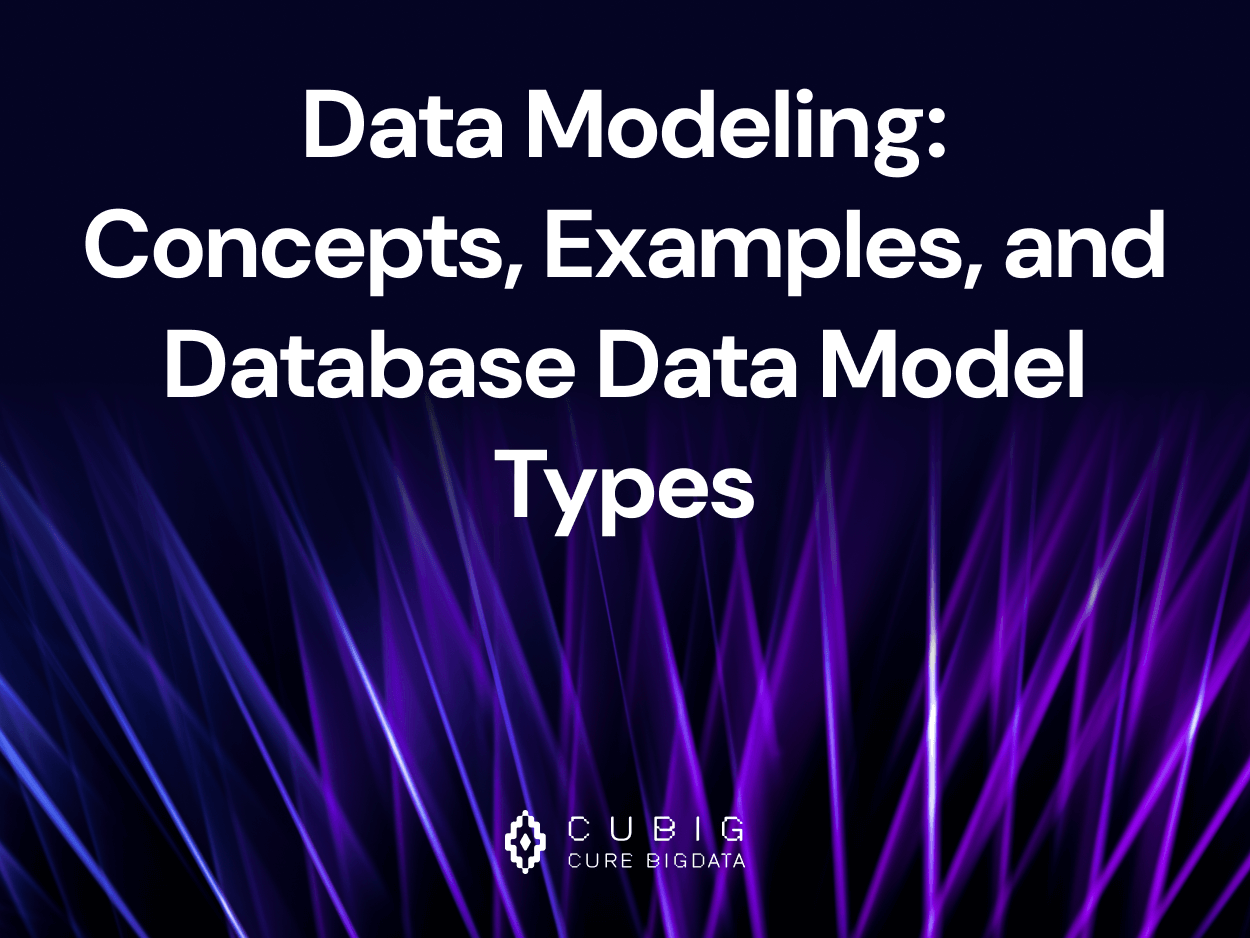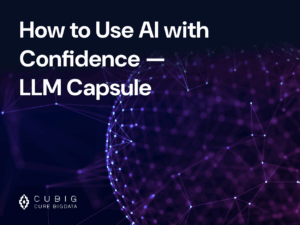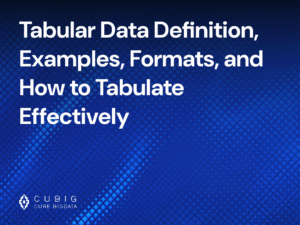Data Modeling: Concepts, Examples, and Database Data Model Types
Table of Contents
Introduction
The Role of Modeling in Data-Driven Business
Today, companies cannot compete without data. Data is not just a record-it is the core of business strategy and the fuel for AI, machine learning (ML), and automation. But just having a lot of data does not create value. The key is how you organize, understand, and use your data. This is where “data modeling” is needed. Data modeling is like making a blueprint that organizes data, matches business needs, and makes your data more useful and high-quality.
Data Modeling in the Age of AI/ML and Synthetic Data
AI and ML are now common. Because of privacy and not having enough data, “synthetic data” is getting popular. Synthetic data is fake data made to look like real data. It helps protect privacy and gives good data for AI training. But to make synthetic data useful and trustworthy, we need better and more flexible data modeling.
About azoo AI: The Link Between Synthetic Data and Data Modeling
Azoo AI is a company that connects synthetic data and data modeling in a new way. azoo AI uses technology to look at your data, find missing parts, and suggest the best data model using AI. This helps you use both real and synthetic data in a reliable and consistent way.

What is Data Modeling? Core Concepts Explained
Definition of Data Modeling
Data modeling is the process of organizing real-world information so computers can understand it. It shows “what to save” (Thing), “what details it has” (Attributes), and “how things are connected” (Relationship). Making a data model is like drawing a plan before building a house.
Key Objectives: Structure, Clarity, Reusability
- Structure: Make complex information easy for everyone to understand.
- Clarity: Show business needs in a clear and simple way.
- Reusability: Use the same data model in different systems or projects.
Types of Data Models
There are three main types of data models. Each one is a step that makes your data structure more detailed.
| Model Type | What It Does | Example/Use Case |
|---|---|---|
| Conceptual Model | Shows business ideas and connections, tech-free | ERD (Entity-Relationship Diagram), Coupang (orders, customers, etc.) |
| Logical Model | Designs data structure, rules, and connections | Attributes, rules, Zigzag (personalized recommendations) |
| Physical Model | Builds real tables and indexes in a database | Tables, indexes, Toss Securities (logs, transactions) |
Conceptual Data Models
Read More : About the Conceptual Data Models
A conceptual data model is the first step. It shows the main ideas and how they connect, without worrying about technology. For example, it shows “Customer,” “Product,” and “Order” and how they are related. This helps everyone in the company understand what data is important.
Real Example: Coupang
Coupang used conceptual data models to plan how customers, products, orders, and deliveries are connected. This helped them make fast delivery and better customer service.
Logical Data Models
A logical data model takes the first step and adds more detail. It shows what information each thing has (like customer name, order date), what type of data it is, and the rules (like “no duplicates” or “must fill in”). It is not tied to a specific database yet.
Real Example: Zigzag
Zigzag used logical data models to organize customer interests, favorite products, and purchase history. This helped them make better product recommendations and ads.
Physical Data Models
A physical data model is the final step. It builds real tables, columns, and indexes in a database. It also makes sure the data is saved safely and can be found quickly.
Real Example: Toss Securities
Toss Securities saves billions of log data every day. They use physical data models to store and find user actions and transaction data fast, helping them improve user experience and make quick decisions.
azoo AI’s Synthetic Data Modeling Technology
Azoo AI uses automated data modeling when making synthetic data. For example, it looks at real data, finds missing or strange parts, and uses AI to suggest the best structure. This makes synthetic data more reliable and useful.

Creating a Data Model: Step-by-Step with Synthetic Data Considerations
Read More : Synthetic Data Generation
Step 1: Requirement gathering
First, talk to the people who will use the data. Find out what the business needs and how the data will be used. For example, do they want to use it for training an AI, making reports, or just saving information? Find out which pieces of data are most important, like names, dates, or prices. Also, ask if any of the data is private or needs to be kept secret. This step helps you understand what your data must do and what rules you need to follow.
Step 2: Conceptual modeling
Next, make a simple drawing to show the main things in your data. These things can be people, places, or objects, like “customer,” “order,” or “product.” Draw lines to show how these things are connected. For example, a customer can make many orders, and each order has products. This picture helps everyone see what is important and how everything fits together. You do not need to worry about details yet-just focus on the big ideas.
Step 3: Logical modeling
Now, add more details to your drawing. For each thing, write down what information you need. For example, for “customer,” you might need name, address, and phone number. Decide what kind of information each one is-is it a number, a word, or a date? Also, make rules, like “every customer must have a name” or “no two customers can have the same ID.” This step makes your data plan more clear and ready for building.
Step 4: Physical modeling
In this step, you get ready to put your data into a real computer system. Decide how to store the data in tables, with rows and columns. Choose the best way to find information fast, like using indexes. If you have a lot of data, you can split it into parts called partitions. Think about how to keep the data safe and how to back it up. This step turns your plan into something a computer can use.
Step 5: Model validation & testing
Finally, check if your data model works well. Try using real data and also synthetic (fake but similar) data to see if everything fits and the rules work. Look for mistakes or missing parts. Ask other people to test it, too. Make sure the model is safe, especially if you use private data. If you find problems, fix them and test again. This step helps make sure your data is correct and ready to use.
azoo AI Use Case
azoo AI looks at a customer’s original data and uses AI to find the best data model, fixing any missing parts. For example, in healthcare, azoo AI can find the link between patient info and medical records, and replace private data with synthetic data to protect privacy.
| Industry | Old Problems | After Using Azoo AI | Main Benefits |
|---|---|---|---|
| Healthcare | Privacy, not enough data | Private data replaced with synthetic, more data | Safe analysis/AI, teamwork |
| Finance | Rules, can’t share data | Synthetic credit/transaction data | New AI services |
| Marketing | Data is spread out, can’t join | Data structure automated, safe joining | Better analysis, strategy |
| Manufacturing/IoT | Rules, security issues | Synthetic data for teamwork/AI models | Supply chain, cost savings |
Why is Data Modeling Important?
For database design and integrity
Data modeling helps you plan how to store your information in a smart way. If you make a bad plan, your data can get mixed up or lost. Fixing a bad data model later is very hard and can cost a lot of money. Good data modeling helps you find what you need quickly and keeps your data safe. When you start with a good model, your database works better and has fewer mistakes.
For scaling ML workflows
Machine learning (ML) uses lots of data to help computers learn and make decisions. If your data keeps changing or is not well organized, your ML models can get confused and stop working well. Every time the data changes, you may have to teach your computer all over again, which takes time. Good data modeling keeps things organized so your ML projects can grow bigger and work faster. It also makes it easier to add new data without breaking your system.
For synthetic data fidelity
Synthetic data is fake data that looks and acts like real data. For it to be useful, it must follow the same rules and patterns as real data. If your data model is not good, your synthetic data will not match real life and can give you wrong answers. A good data model helps you make synthetic data that is accurate and safe to use. This way, you can test new ideas or protect private information without using real data.
Examples of Data Modeling
Entity-Relationship Diagrams (ERD)
An Entity-Relationship Diagram, or ERD, is a special picture that shows how different things (like people, places, or objects) are connected in a system. Each thing is called an “entity” and is drawn as a box. The lines between the boxes show how the entities are related, like “a customer places an order.” ERDs also show details about each entity, such as a customer’s name or an order’s date, using ovals or lists inside the box. You can see if one thing is connected to one or many other things, which is called “cardinality.” ERDs help everyone understand how data is organized before building a database, and they make it easier to spot mistakes or missing information.
Star Schema and Snowflake Schema (for OLAP)
A star schema is a simple way to organize lots of business data for fast analysis. It has one big “fact table” in the center, like sales or orders, and smaller “dimension tables” around it, like customers or products. All the small tables connect to the big table, making a star shape. A snowflake schema is similar, but its small tables are split into even more tables, like a snowflake. These schemas help people make reports and find business trends quickly.
NoSQL vs Relational model use cases
Relational databases use tables with rows and columns, and they follow strict rules about how data fits together. This is great for things like banks or stores, where you need everything to be correct and organized. NoSQL databases are more flexible and can store many types of data, even if the data is messy or changes a lot. NoSQL works well for things like social media, big websites, or apps that need to grow fast. If you need strong rules and data that never changes shape, use a relational database. If you need to handle lots of different or changing data, or need to work with big data quickly, NoSQL is a good choice.


Data Modeling in Synthetic Data Workflows
Why traditional modeling alone isn’t enough for synthetic data
Just using old data models is not enough for synthetic data. Synthetic data needs to copy the real patterns and special details from real data, but old models can miss these things. If you only use old models, your fake data might look real but act wrong. That’s why you need new ways to check and build your data for AI and learning.
How azoo AI augments modeling with AI
azoo AI uses smart AI to look at your data and find the best way to organize it. The AI fills in any missing parts and finds strange or wrong data. This helps make synthetic data that is much closer to real data, so your AI models work better and learn the right things.
Auto-mapping schema from raw → model-ready
azoo AI can take messy, raw data and turn it into a clean, ready-to-use data model automatically. You don’t have to do it by hand. This saves time and makes sure your data is always set up the right way for your project.
How azoo detects anomalies and fills missing schema definitions
azoo AI checks your data for anything strange or missing. If it finds a problem, it can fix it or add what’s missing. This makes your data better and helps your AI learn from good, complete information.
Best Practices for Effective Data Modeling
Maintain data lineage and metadata
Always keep track of where your data comes from and how it changes. This helps you find mistakes fast and trust your data.
Version control for models
Save different versions of your data model. If something goes wrong, you can go back to an older, working version.
Integrate with MLOps pipelines
Connect your data modeling with your AI and ML work. This way, your data is always checked and ready for machine learning.
Validate with real + synthetic data
Test your models using both real and synthetic data. This makes sure your data model works well in all situations and is safe to use.

Conclusion
Accurate Modeling Is the Key to Trustworthy AI in the Synthetic Data Era
Synthetic data is a key tool for AI innovation, but its trust depends on accurate data modeling. If the data model is wrong, synthetic data-even if it looks real-can be fake and useless. But if the model is correct, synthetic data can copy real data’s patterns and context. azoo AI uses AI-powered modeling to keep data structure consistent and private, building a strong base for trustworthy AI. Data modeling is now like a quality certificate for the AI age.
azoo AI Has Automated Tools to Improve Data Modeling Quality
azoo AI has technology to automate everything from data structure analysis to synthetic data creation and quality checks. Even with complex data, azoo AI quickly finds the right model and uses AI to fill in missing parts, making data more consistent and high-quality. Many companies already use azoo AI’s solutions as a new standard for data use. If you are interested in synthetic data and data modeling, take a look at azoo AI’s technology and examples. azoo AI can be a strong partner at the start of your data innovation journey.
CUBIG's Service Line
Recommended Posts









